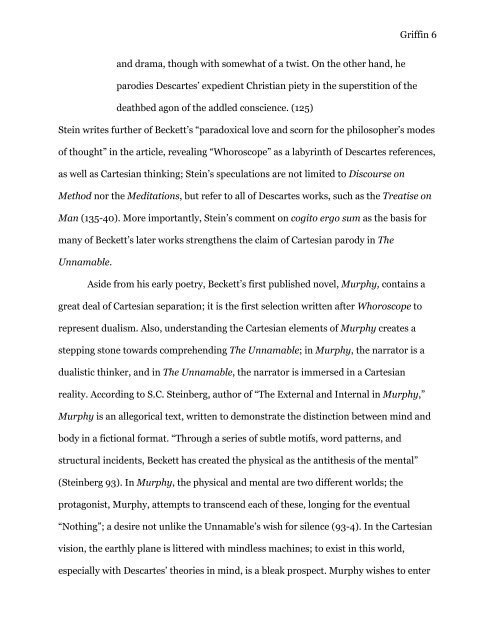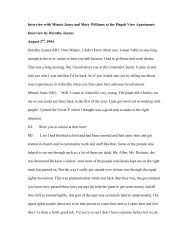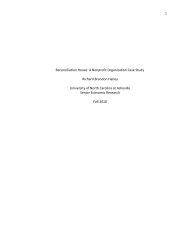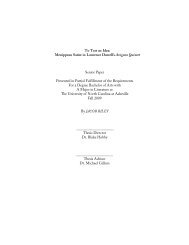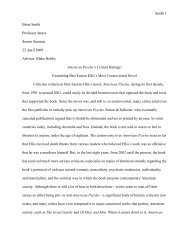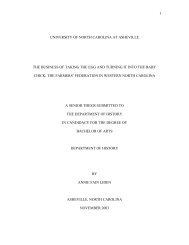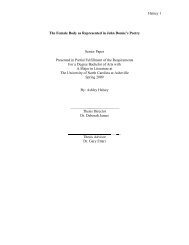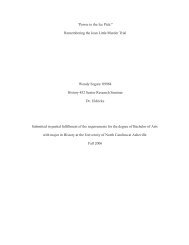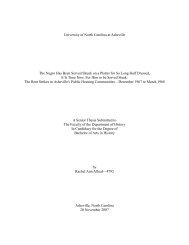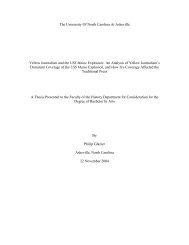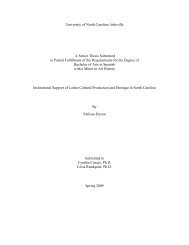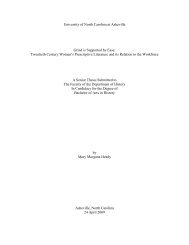Cartesian Thought in Samuel Beckett's The Unnamable
Cartesian Thought in Samuel Beckett's The Unnamable
Cartesian Thought in Samuel Beckett's The Unnamable
- No tags were found...
Create successful ePaper yourself
Turn your PDF publications into a flip-book with our unique Google optimized e-Paper software.
Griff<strong>in</strong> 6and drama, though with somewhat of a twist. On the other hand, heparodies Descartes’ expedient Christian piety <strong>in</strong> the superstition of thedeathbed agon of the addled conscience. (125)Ste<strong>in</strong> writes further of Beckett’s “paradoxical love and scorn for the philosopher’s modesof thought” <strong>in</strong> the article, reveal<strong>in</strong>g “Whoroscope” as a labyr<strong>in</strong>th of Descartes references,as well as <strong>Cartesian</strong> th<strong>in</strong>k<strong>in</strong>g; Ste<strong>in</strong>’s speculations are not limited to Discourse onMethod nor the Meditations, but refer to all of Descartes works, such as the Treatise onMan (135-40). More importantly, Ste<strong>in</strong>’s comment on cogito ergo sum as the basis formany of Beckett’s later works strengthens the claim of <strong>Cartesian</strong> parody <strong>in</strong> <strong>The</strong><strong>Unnamable</strong>.Aside from his early poetry, Beckett’s first published novel, Murphy, conta<strong>in</strong>s agreat deal of <strong>Cartesian</strong> separation; it is the first selection written after Whoroscope torepresent dualism. Also, understand<strong>in</strong>g the <strong>Cartesian</strong> elements of Murphy creates astepp<strong>in</strong>g stone towards comprehend<strong>in</strong>g <strong>The</strong> <strong>Unnamable</strong>; <strong>in</strong> Murphy, the narrator is adualistic th<strong>in</strong>ker, and <strong>in</strong> <strong>The</strong> <strong>Unnamable</strong>, the narrator is immersed <strong>in</strong> a <strong>Cartesian</strong>reality. Accord<strong>in</strong>g to S.C. Ste<strong>in</strong>berg, author of “<strong>The</strong> External and Internal <strong>in</strong> Murphy,”Murphy is an allegorical text, written to demonstrate the dist<strong>in</strong>ction between m<strong>in</strong>d andbody <strong>in</strong> a fictional format. “Through a series of subtle motifs, word patterns, andstructural <strong>in</strong>cidents, Beckett has created the physical as the antithesis of the mental”(Ste<strong>in</strong>berg 93). In Murphy, the physical and mental are two different worlds; theprotagonist, Murphy, attempts to transcend each of these, long<strong>in</strong>g for the eventual“Noth<strong>in</strong>g”; a desire not unlike the <strong>Unnamable</strong>’s wish for silence (93-4). In the <strong>Cartesian</strong>vision, the earthly plane is littered with m<strong>in</strong>dless mach<strong>in</strong>es; to exist <strong>in</strong> this world,especially with Descartes’ theories <strong>in</strong> m<strong>in</strong>d, is a bleak prospect. Murphy wishes to enter


